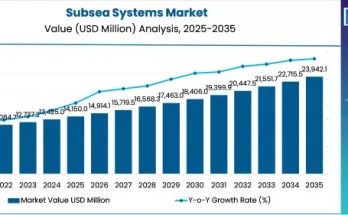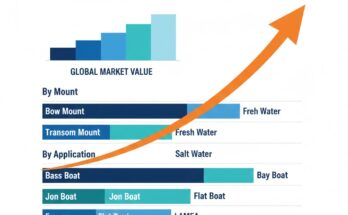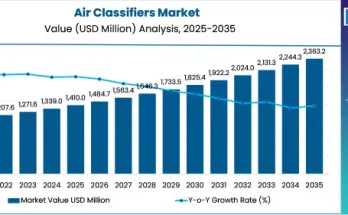The Ultrasonic Flow Meter Market is experiencing impressive growth, with its global valuation expected to climb from around US$ 2.15 billion in 2024 to approximately US$ 4.11 billion by the end of 2034, reflecting a dynamic CAGR of 6.7% over the forecast period. This robust trajectory underscores industrial demand for precise, non-intrusive flow measurement solutions.
- Market Breakdown & Technology Trends
Ultrasonic flow meters come in various types and technologies, each offering specific advantages across applications:
- By Type:
- Clamp-On: The most widely used in 2024, with a value exceeding US$ 1.06 billion, projected to reach about US$ 2.05 billion by 2034. Their non-intrusive installation makes them highly flexible and low-maintenance.
- Insertion and Inline variants serve specialized applications where direct contact or pipeline integration is necessary.
- By Technology:
- Transit Time – Single/Dual Path: Expected to see strong demand, particularly for high-accuracy needs, reaching about US$ 1.92 billion by 2034.
- Transit Time – Multi Path, Doppler, and Hybrid types are also growing, each catering to distinct fluid types and use cases, including multi-path designs for turbulence compensation and Doppler models for bubbly or slurry media.
- Key Growth Drivers
Several factors are fueling market expansion:
- Accuracy, Versatility, and Non-Intrusiveness: Ultrasonic meters are prized for delivering precise flow measurements without disrupting flow or introducing moving parts—translating to lower maintenance and high reliability.
- Water & Wastewater Management: Growing emphasis on conserving water and monitoring usage is driving demand for ultrasonic flow meters in utilities and industrial plants globally.
- Oil & Gas, and Chemical Manufacturing: These sectors benefit from the safe, contamination-free measurement offered by ultrasonic technologies.
- Technological Advancements: Innovations in sensor sensitivity, signal processing algorithms, and multipath designs contribute to improved performance and adoption rates across diverse industries.
- Regional Highlights & Market Dynamics
- North America: With a 2024 market value around US$ 758 million, the region is an important market, buoyed by automation trends, infrastructure upgrades, and regulatory mandates for precision flow tracking. The United States leads, expected to nearly double its market value by 2034, capitalizing on industrial and environmental compliance needs.
- East Asia: Positioned for rapid expansion—with regional value near US$ 884 million in 2024—this zone demonstrates one of the highest expected growth rates through 2034. Within it, China and South Korea emerge as key contributors, followed closely by Japan, known for its focus on water quality and resource management.
- Japan: Projects a growth rate in the high single digits, as ultrasonics are critical to maintaining safe, resilient water supply systems in a resource-constrained environment.
- Challenges and Competitive Pressures
Despite strong momentum, the market faces certain challenges:
- High Initial Costs: Advanced ultrasonic meters—especially those with multipath capabilities or smart features—can carry hefty price tags that might deter some budget-conscious buyers, particularly small and medium enterprises.
- Competition from Alternative Technologies: Electromagnetic, vortex, and Coriolis flow meters also offer compelling features—like accuracy in aggressive fluids or robustness in extreme conditions—creating competitive pressure on ultrasonic deployments.
- Strategic Pathways for Manufacturers
To stand out, market players are leveraging innovation and differentiation strategies:
- Technological Differentiation: Manufacturers are investing in improved sensor designs, signal processing capabilities, and communication protocols to bolster meter performance and reliability.
- Niche Market Focus: Targeting specialized applications—such as steam metering, harsh chemical environments, or water utilities—allows newer entrants to build momentum without direct confrontation with established brands.
- Global Expansion & Partnerships: Key industry players are forging alliances, acquiring local distributors, and strengthening global channels to improve reach and market footprint.
Conclusion
The Ultrasonic Flow Meter Market is on a compelling growth trajectory, driven by the need for accurate, non-intrusive, and efficient flow measurement solutions across utilities, industrial sectors, and water systems alike. With clamp-on types leading the pack and transit-time technologies driving accuracy, growth is being catalyzed by urbanization, smart infrastructure development, and regulatory pressures. While initial investment costs and alternative technologies pose challenges, ongoing innovation and strategic market positioning will continue powering the sector toward a strong and sustainable future.



